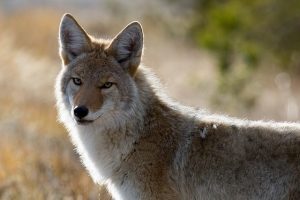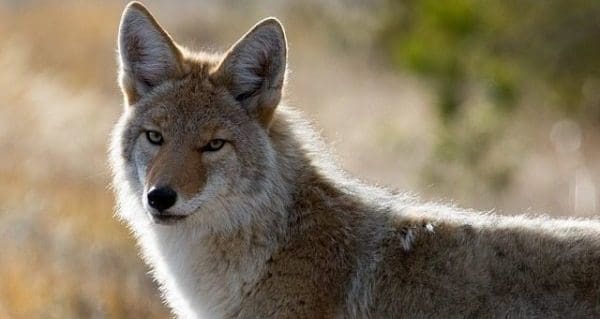Crossroads Staff
There have been recent reports of coyotes hanging around a couple of communities in the area. The provincial ministry of environment has provided information on coyote awareness.
Conservation officers are part of the ministry of environment, so the ministry was contacted to comment on coyotes. Due to a byelection in the Kindersley constituency, the officers are unable to comment in person. However, the ministry provided information in written form.
 The ministry confirmed that there have been sightings of a coyote in the communities of Kindersley and Elrose.
The ministry confirmed that there have been sightings of a coyote in the communities of Kindersley and Elrose.
If people encounter a coyote, they are advised to treat it the same way as any other wild animal and they should keep their distance, make noise and do not approach the animal. If the coyote appears to be sick or if it is acting aggressively, people should contact the ministry of environment by using its TIP line at 1-800-667-7561 or by calling #5555 if they have a SaskTel cellular phone.
According to the ministry, coyotes have become very good at adapting to live in urban areas. Cities and towns offer a variety of food sources, so urban areas are attractive to coyotes because they are scavengers and will find food wherever it is available.
Most coyotes go unnoticed through their lives, but conflicts could arise. The greatest threat is to smaller animals, so people are not in great danger aside from their general fear of wild animals. Certain domestic pets are at risk because cats are seen as a food source and dogs are seen as a territorial rival.
The ministry says urban coyotes will actually do some good by controlling the number of rats, mice, raccoons and other nuisance animals. Urban coyotes often survive without causing any problems for people, but municipalities often have policies to remove problem animals if necessary.
People should never try to feed or tame a coyote because it is a wild animal, and people should not let their dogs near coyotes. If people know a coyote has been spotted in their urban area, their pets should be kept on leashes.
If confronted by a coyote, people should not run away or turn their backs on the animal. People should not allow a coyote to get between them and their children and people should clap their hands, blow a whistle and make themselves look as large as possible in an encounter.
People should remove any food sources or opportunities to hunt from their properties. Food sources could include spilled garbage and unprotected compost, so garbage should be inside a container and compost should be projected to reduce or discourage the animals from entering the property. Also, pet food should not be left outside overnight.
Coyotes are not restricted to nocturnal hunting, so they will also hunt during the day as they are opportunistic hunters. Coyote tracks appear similar to dog tracks and if garbage has been rummaged through by an animal, it could be a coyote.

